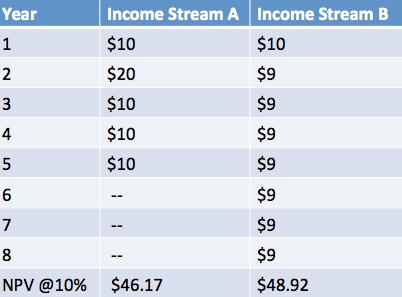When You Can’t Get No Respect
 Some will recall comic Rodney Dangerfield’s catch phrase. Others may remember Aretha Franklin’s iconic spelling, R-E-S-P-E-C-T.
Some will recall comic Rodney Dangerfield’s catch phrase. Others may remember Aretha Franklin’s iconic spelling, R-E-S-P-E-C-T.
When you respect someone, it’s a verb. When you get respect, it’s a noun. Either way, it has positive connotations.
But what’s the connection between respecting someone, and receiving respect from them?
Is it a chicken-egg thing? Does one cause the other? Is it inevitably one-sided, as in “respect for one’s elders,” where the relationship between respecter and respectee is a permanent one?
Is it like trust, where the trustor and trustee exist in a constantly reciprocating relationship? Is it like Jesus’s saying, “It is more blessed to [respect] than to [be respected]?”
Is it a Beatles-like thing, where “the [respect] you take is equal to the [respect] you make“? Is it like exercise, where no pain, no gain is the rule? Or is it like Bonnie Raitt sang, “I can’t make you [respect] me, if you don’t?”
And finally, what’s the connection with buying, selling, and the modern workplace?
Respect is Unconditional
We agree that we should respect others where respect is due (never mind who judges “due”). It’s much harder to agree that others should respect us. Particularly when the “others” are the ones we may be disagreeing with.
If I respect you, it doesn’t necessarily follow that you’ll respect me. Many cultures show respect for elders; it doesn’t follow that the elders must respect the young. Nor is it necessarily disrespectful if they don’t. So respecting someone is no guarantee that they’ll respect you (sorry, John Lennon).
Though frequently, it does work that way. To show respect to another can be a form of etiquette. This function is powerful in sales, where it’s easy to disrespect customers’ knowledge, even if we don’t intend to.
Demonstrated respect for the customer is rare enough that respect can be a source of differentiation. Too many sellers don’t follow the Kantian rule of treating others as ends in themselves, treating them instead as means to our own ends. That’s disrespect, and it’s not uncommon, given that selling is potentially a manipulative, secretive black art – if not handled from trust.
Respect should be unconditional. If I respect you only on condition that you respect me, that is faux respect. If you merit respect, I should respect you, regardless of whether you return it to me.
Disrespect
So far, you’re likely agreeing with most of what I’ve said. But how about this. What happens when you should, by any objective measure, be respected – and someone disrespects you?
The key question is: do you return disrespect for disrespect? Let me be a little controversial here:
- If you are holding a resentment against someone who has disrespected you, the salient point is that you are holding a resentment.
- If you are upset by the lack of respect from others, as should be your due, the only relevant point is that you are upset.
- If you lose all respect for someone who has disrespected you, then either you misplaced your respect in the first place, or you gave in the desire for revenge.
- If you demand respect, you will most likely not get it. If you continue to demand it, you will continue to drive down the odds of getting it.
Respect is a virtue – when paid. When respect is received – treat it as a gift, a gift of grace.
Act so as to earn respect – but give up attachment to the outcome.
Be grateful for the respect you earn – but don’t treasure it.
Respect others – but do so without conditioning it on being respected in return.
It is better to respect than to be respected.
If you can’t get no respect – that’s your problem. And you can fix it anytime you want, by detaching from the outcome.
Go respect someone.

 The Associated Press decided to
The Associated Press decided to  I rarely write blogposts promoting the services we offer. But since we have something new to offer – this is one of those times.
I rarely write blogposts promoting the services we offer. But since we have something new to offer – this is one of those times. The NYTimes recently published
The NYTimes recently published  This weekend I joined a dozen school buddies for an annual golf outing. Now, I took up golf late in life, which explains why I’m pretty much the worst player in the group. At least, that’s what I tell myself.
This weekend I joined a dozen school buddies for an annual golf outing. Now, I took up golf late in life, which explains why I’m pretty much the worst player in the group. At least, that’s what I tell myself.
 Please welcome guest-blogger Sonja Jefferson to Trust Matters today. She’s founder of
Please welcome guest-blogger Sonja Jefferson to Trust Matters today. She’s founder of  Several decades ago, when “leadership” became a Big Thing, it was heavily personality-based. It posited Leadership as something done by Leaders, who had learned the art of how to Lead. As a consultant friend of mine, Renee Wingo, put it, “It’s a subject whose proponents can’t figure out whether it’s a noun, a verb, or a gerund.”
Several decades ago, when “leadership” became a Big Thing, it was heavily personality-based. It posited Leadership as something done by Leaders, who had learned the art of how to Lead. As a consultant friend of mine, Renee Wingo, put it, “It’s a subject whose proponents can’t figure out whether it’s a noun, a verb, or a gerund.”